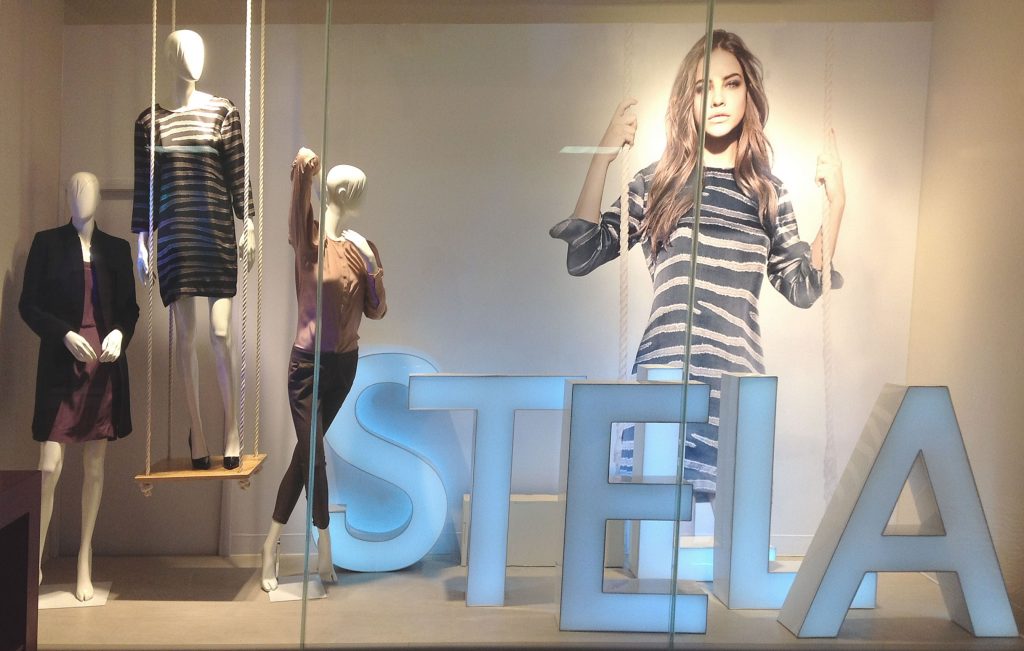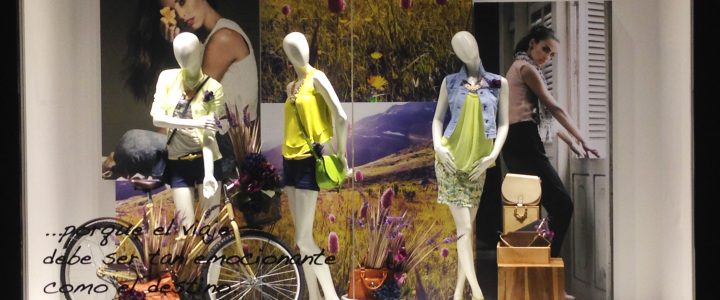
The Showcase is the visual part of the brands' commercial strategy.
The term Fast Fashion (FF) that is now experienced in fashion, has forced us to react quickly but it must be effective, the media, the shopping experience, etc ... and the rapid handling of fashion trend information force the manufacturer and marketer to have what the customer is looking for at the exact moment and in the necessary quantities, that is a global movement that must be kept in mind today. Therefore, within the marketing strategies of retailers is the visual marketing of the merchandise (visual merchandising) that makes the product look appetizing inside the store and above all focused on the target that is intended to reach and be a bearer of the brand.
It's the cherry on the cake, it's the glamorous part of the brand, like a window into the store's interior, where we must reflect everything that was planned in the marketing strategy.
The window display has the expensive objective of selling, in accordance with the brand's guidelines and its technical design and commercial specifications. The window display was born from the need to convey to the outside of the point of sale the arrival of new products, seasonal changes, or an event worthy of enveloping the product to make it appealing to the customer. It must be provocative, inciting, and above all, invite the viewer to come in and see what's happening inside the store.
The brand promise must be lived
from outside to inside the stores,
That's where the showcase does its job,
when congruence exists on both sides.
What are the shop windows like? The display cabinets (also known by that name) must meet certain aspects to be considered an optimal space for the exhibition, which are:
ADAPTABLE: That all types of merchandise can be displayed.
OPEN: That the content, garments and information can be appreciated in detail.
CHANGING: They should always show different displays; a static window display does not sell or invite you into the store.
CLEARS: As for your message, avoid confusion, since we communicate with our customers through our shop windows.
Don't expect a surge in sales by always presenting your product in the same way. Communication with customers must be creative and different, showing them something new they might be interested in.
THE LOCATION OF THE SHOWCASE IS OF UTMOST IMPORTANCE IN THE DESIGN OF THE POINT OF SALE.
Since it begins to communicate the purchasing experience, this will be the customer's first contact with the brand and its products.
What isn't a window?
– It’s not just an extra space in the store’s design; it should be part of the store’s design.
– It is not a catalog to list all the items the store sells.
– It's not a space to be overloaded with multiple messages at once; remember that customers have very little time to pay attention to multiple messages at once.
– It is not a place where mannequins will be placed alone, on the contrary, creative concepts must be generated to wrap the product that will be the protagonist.
– It's not a counter, but rather a silent salesperson who should guide the customer through the latest products we have in the store.
– It doesn’t work alone; there must be a strategy behind it, supported by the product.
How does a window display help us increase sales?
As we described above, the window display should be fresh and treat the merchandise as perishable, as something that will spoil the longer it spends on display in the store. This gives us a guideline for knowing the expiration date of an in-store message. How often do you change a window display? It should be so. Every time your customer returns to the store, they should have an excuse to come in and see how everything is different from their previous visit.
80% of the messages that we humans receive are through the visual sense and the other 20% is through the other senses, so why not pay attention to the visual aspect of the windows or the store? Having this reason in between, it challenges us to keep the store always presentable and tidy according to our target customer. Once the customer takes the trouble to enter the store, it forces us to treat them well and satisfy the needs that they have at that moment, since many times: THE CUSTOMER DOES NOT KNOW WHAT THEY ARE LOOKING FOR, HOWEVER, WHEN THEY SEES IT THEY IDENTIFY IT AND WANTS IT.
If we bring together all the above aspects, which make up our customer's shopping experience, with a window display and a sales floor aligned to a specific action, it can mean a considerable increase in sales, especially because we will increase visitors and encourage unplanned purchases. THE WINDOW DISPLAY DOES NOT WORK ALONE, IT IS PART OF AN ALIGNMENT OF THE BRAND'S COMMERCIAL ACTIONS.





